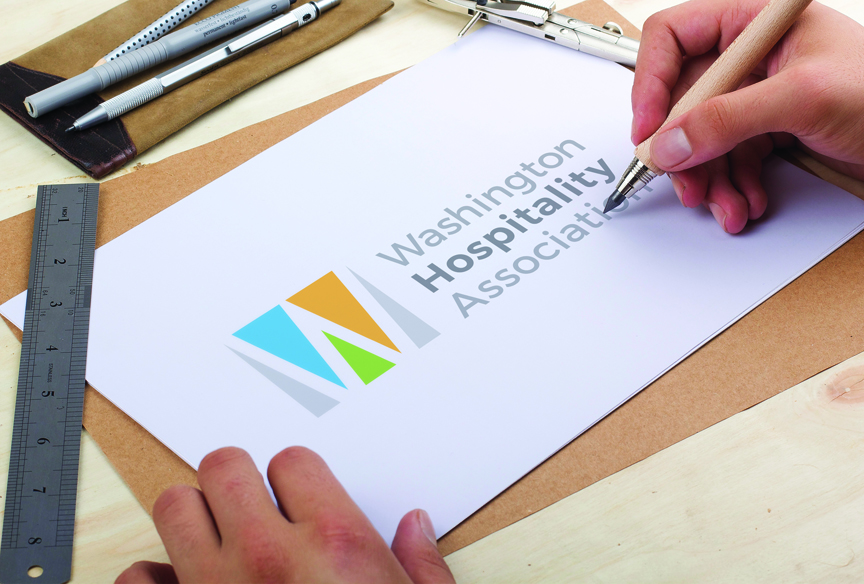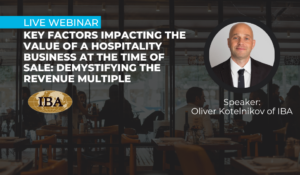By Lisa Leinberger and Jillian Henze, Washington Hospitality Association
Whether you are a new business owner or are revamping your old business, a brand is an important tool that lets your customers know what your business is all about and sets it apart from the competition.
The best question to ask yourself when thinking about your brand is who are you as a business? What is the heart and soul of your organization?
[expander_maker id=”1″ more=”Read more” less=”Read less”]
These are questions the rebranding task force asked before the Washington Restaurant Association and the Washington Lodging Association officially joined forces two years ago as the Washington Hospitality Association.
Back in 2013, Zahoor Ahmed, chief financial officer and vice president at the R.C. Hedreen Company, was the incoming chair of the Washington Lodging Association when discussions about a merger between the two associations got underway. At the time, there were combined restaurant and lodging associations in 26 states but not in Washington. Although the two sectors differed in size and texture and profits, they connected in their goals of serving their guests. Leaders in both sectors shared the belief that working together under one roof was the best way to represent members and serve the entire hospitality industry.
Nevertheless, each side had concerns about losing their identity as associations. They already had their brands. Ahmed said they needed to address those concerns before they could move forward with the merger.
In 2015, WLA and WRA signed a joint operating agreement and got to work on creating a unified brand in anticipation of launching a combined association. A rebranding task force made up of restaurant and hotel members was assigned responsibility for proposing a name for the new organization and hiring a consultant to design a new logo and help develop the new brand.
After a competitive RFP process, the task force selected Daniels-Brown Communications, an advertising, public relations and design firm based in Olympia, for the project.
Stephen Daniels-Brown, the co-founder of the company, said the branding task force members didn’t fight for their respective hotel or restaurant ideas or regional preferences, but were great caretakers of the process to align everyone to the goal.
“You get some very strong opinions about the form and function of the brand,” Daniels-Brown said. “What matters most in a brand is the brand reputation.”
The Daniels-Brown team worked with the task force, association staff and members of the combined board as part of their creative process. They also interviewed stakeholders.
“We looked at what other states called themselves,” Ahmed said. “We had a conversation about ‘What are we?’”
Lane Hoss, vice president of operations for Anthony’s Restaurants, was also on the task force. She remembers how the group wanted to focus on two main points in branding. The first was to focus on the strengths each group brought to the new organization, and then to communicate this new identity to the general public.
The second point was to make sure the brand and logo encompassed the whole state, not just certain cities or locations.
A brand isn’t just a logo. It is who you are as a business and what people think about when they think about you.
“One of the challenges we had was to come up with a name that wasn’t 25 words long,” Hoss said. She said they talked about trying to combine the two separate names. They were very long and didn’t encompass all of the businesses they wanted to serve. Finally, the group took a look at what restaurants and hotels had in common.
“We’re all about hospitality. We’re all about serving the guests,” she said.
Daniels-Brown agreed there were some divergent views on the name, but hospitality won “because of the warmness of that.”
In a board workshop, Daniels-Brown helped board members and staff articulate the characteristics of this new association. They wanted the brand to reflect that the new organization would be a supportive, responsive member resource and a powerful, unified and credible advocate. It would be deeply connected to the communities it serves, and it would be inclusive and welcoming.
Ahmed said both sectors profoundly connect with their communities. The nature of the hospitality industry relies on customer loyalty. Everyone has a favorite bar, restaurant or hotel they return to in their neighborhoods or at their favorite vacation spot. Hotels and restaurants not only give their guests great experiences, but are committed to their communities. Holding fundraisers for their favorite causes is one of the many examples of this. Hospitality is the largest employer in the state.
“We need to be a leader in the community,” Ahmed said.
The committee had a few guidelines for Daniels-Brown when it came to the logo. There should be no pineapples, forks or bells, no seals or emblems and no acronyms. There are many brands out there in the hospitality industry that use these images, and they wanted to avoid any confusion.
The task force wanted our logo to be approachable, of the people and easily identifiable as from the state of Washington, rather than Washington, D.C.
It was presented with several logo options, and the logo used today was the standout favorite. Hoss said she felt the colors translate the landscape of the whole state.
Daniels-Brown created a mark that reflects the unity of our diverse businesses and cultures. The team incorporated a W made from triangles of various sizes to represent the different types and sizes of member businesses. The colors reflect the geographic diversity of membership: the blue represents the state’s rivers, lakes and ocean, the green expresses the color of our forests and trees, and the orange embodies Eastern Washington and our golden summer evenings. The words Washington Hospitality Association appear, not an acronym. The Association has committed to using the powerful words in the name, not an abbreviation.
If you are creating a new brand from scratch, Hoss and Ahmed had some words of advice.
Hoss said to make sure you are coming up with something short and straightforward.
“It should speak to who you are,” she said. If you are a casual restaurant, your brand and logo should reflect that.
She said to figure out what is the heart and soul of your business and how you want the public to view it.
“Hear everybody’s concerns,” Ahmed said. “Whenever you have stakeholders, listen to every one of them. Be open to everyone’s ideas and keep an open mind.”
[/expander_maker]



















![[Class, May 20] ServSafe Manager, Kent](https://wahospitality.org/wp-content/uploads/2018/07/CALEND1-150x150.png)







